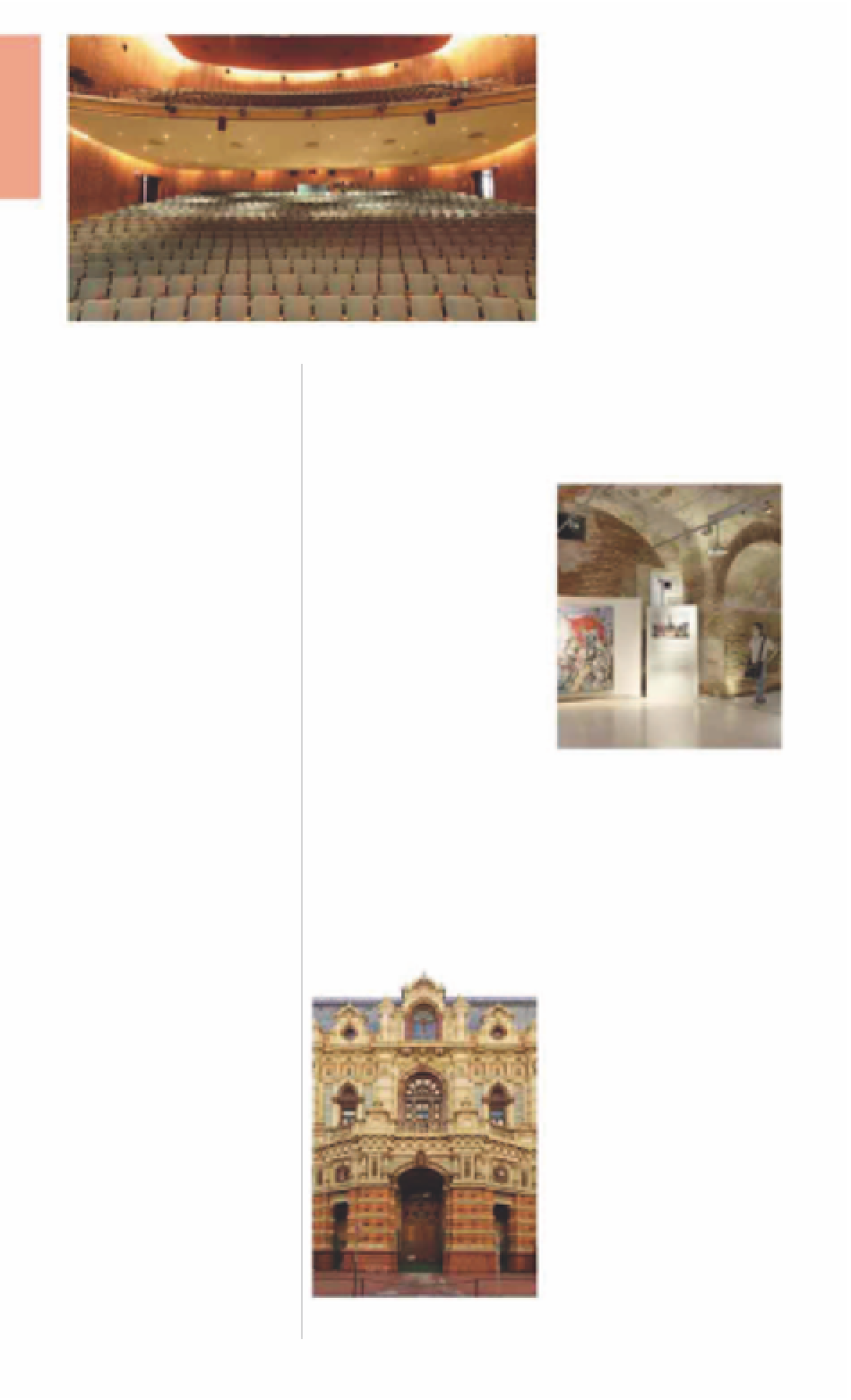Travel Reference
In-Depth Information
green slate from Sedan in
France, and marble from Azúl in
the Buenos Aires province. Tall
palm trees add to the tropical
exuberance of the building,
which is decorated with the
shields of the various
Argentinian provinces. The
Palacio once housed the head-
quarters of Aguas Argentinas,
the firm that evolved out of the
old state-run water board
during privatization under
President Menem's government
in the 1980s and 1990s.
Housed within the building
is the unusual
Museo del
Agua y de la Historia Sanitaria
,
which explains the history of
water sanitation in Argentina
and the world.
The Sala Martín Coronado auditorium at Teatro San Martín
a
Te a t ro
San Martín
Ave Corrientes 1530.
City Map
2
C4.
Te l
(0800) 333-5254, (011)
4374-1385 (guided tours).
Uruguay.
Open
box office: 10am−
10pm daily.
8
noon Tue-Fri.
∑
complejoteatral.gob.ar
Centro Cultural San Martín:
Te l
(011)
4374-1251.
Open
8am-10pm.
completely separate cultural
center, with its own main
entrance on Calle Sarmiento.
This center is often used by
emerging musical artists and
aspiring photographers to
showcase their talents to
the mainstream.
s
Palacio de las
Aguas Corrientes
Ave Córdoba 1950.
City Map
2 C4.
Callao, Facultad de Medicina.
Museo del Agua y de la Historia
Sanitaria:
Te l
(011) 6319-1104.
Open
9am-1pm Mon-Fri.
8
11am Mon.
Built in the 1950s, this state-
sponsored arts complex used
reinforced concrete in the
functional, boxlike style popular
at the time. It houses a 1,100-
seat theater, two smaller
theaters, a cinema, and a
photograph gallery. World-class
and top-notch local theater
companies and major
photographic exhibitions fill a
busy schedule, while the
cinema specializes in art-house
retrospectives and screens
daring, often obscure archival
material. The huge lobby is
often given over to free dance
shows in the evenings and is a
meeting place for students and
art-lovers from all over the city.
Over the past few decades,
Avenida Corrientes has lost
many of its bookshops and is no
longer quite the Broadway of
Buenos Aires it used to be. This
throws into sharper relief the
importance of the Teatro San
Martín as a well-funded, censor-
free milieu for cutting-edge
artists. Two companies - the
Contemporary Ballet and the
Puppeteers Group - are based
permanently at the theater. At
the rear of the lobby it is
possible to walk through to the
Centro Cultural San Martín
,
which is, rather confusingly, a
The Palacio de las Aguas
Corrientes (Palace of Running
Water), built between 1887 and
1895, is an ostentatious
celebration of civic pride and
eclectic vitality. Located down
Avenida Córdoba, the Palacio is
the road's most stunning
building. Terracotta tiles were
imported from Leeds in Britain,
Brightly lit exhibits on display in Museo
del Bicentenario
d
Museo del
Bicentenario
Entrance on Hipólito Yrigoyen &
Paseo Colón.
City Map
3 E5.
Te l
(011)
4344-3802.
@
8, 17, 29, 33, 39, 64, 74,
93, 111,130, 152.
Open
Apr-Nov:
10am-6pm Wed-Sun & hols; Dec-
Mar: 11am-9pm Wed-Sun & hols.
8
-
∑
museobicentenario.gob.ar
Located within the Casa Rosada
in the former Taylor Customs
building, this museum
commemorates 200 years of
Argentina's independence,
which was celebrated on May
25, 2010. It was inaugurated a
year later by President Cristina
Fernández de Kirchner.
The museum, which still has
its original red-brick walls,
exhibits paintings, personal
items, and official possessions
that belonged to former
Argentine presidents such as
Juan Domingo Perón and his
The vivid façade of the striking Palacio de
las Aguas Corrientes
For hotels and restaurants see pp278-83 and pp288-99




































